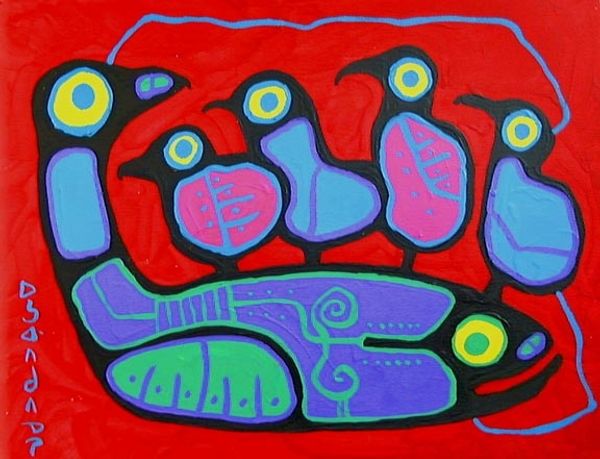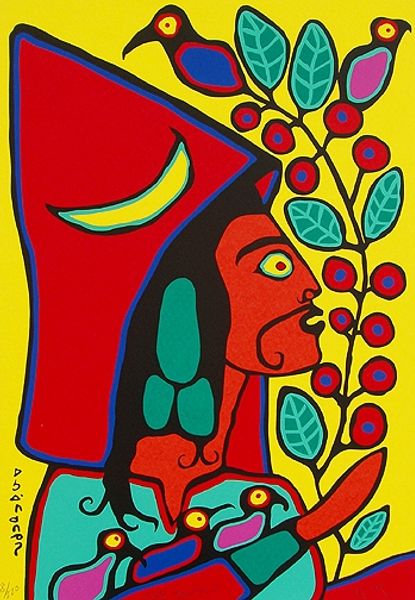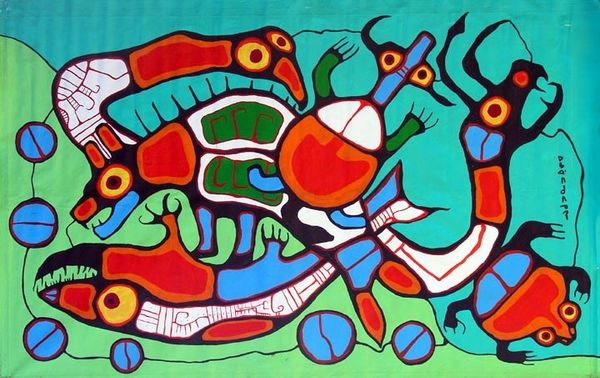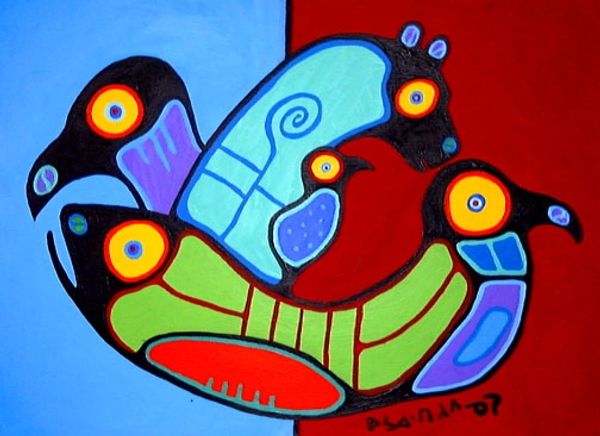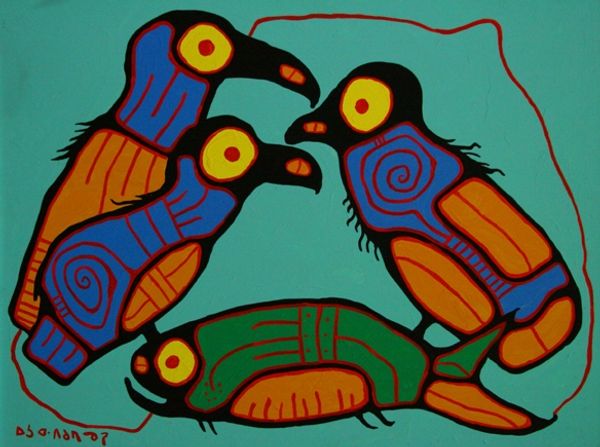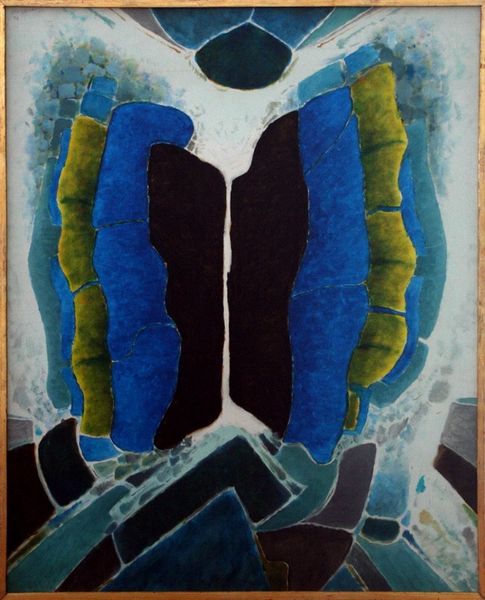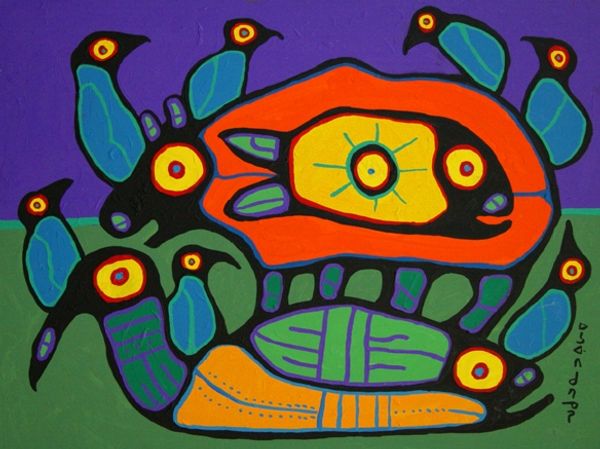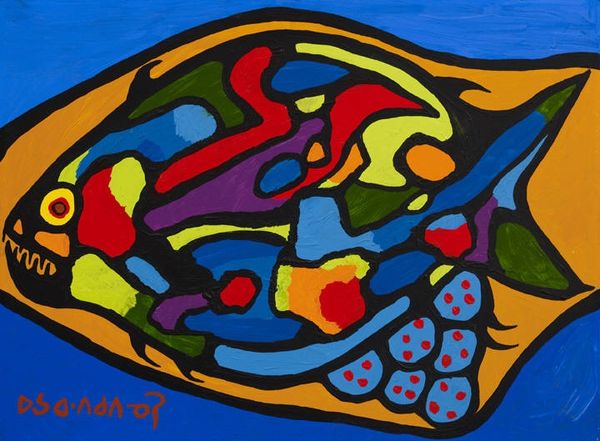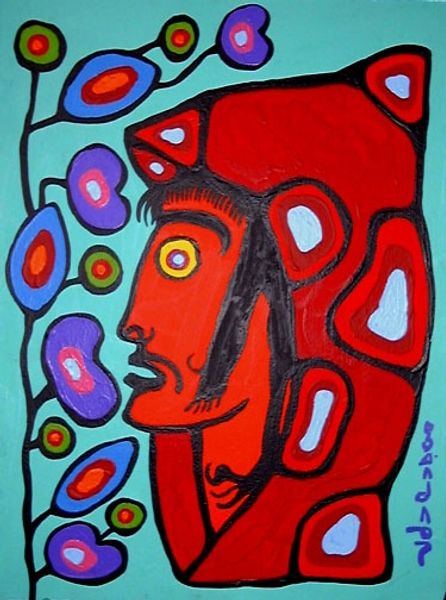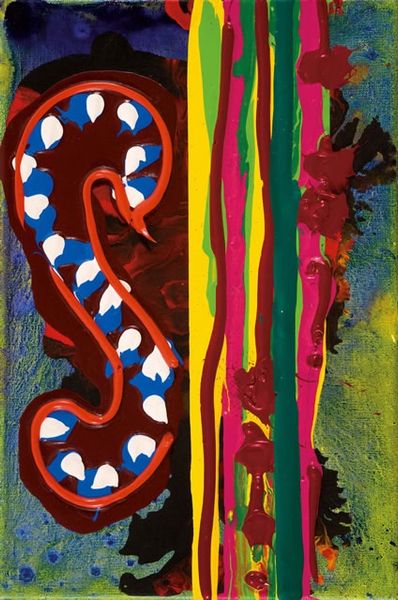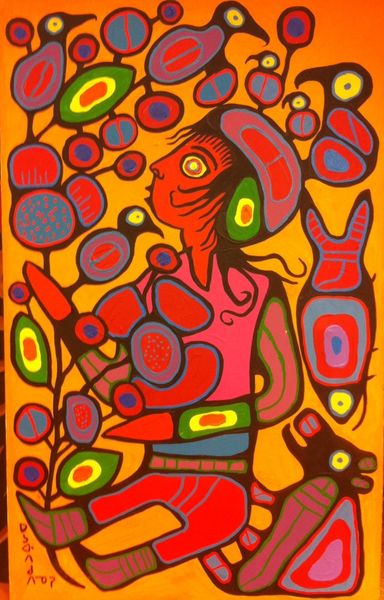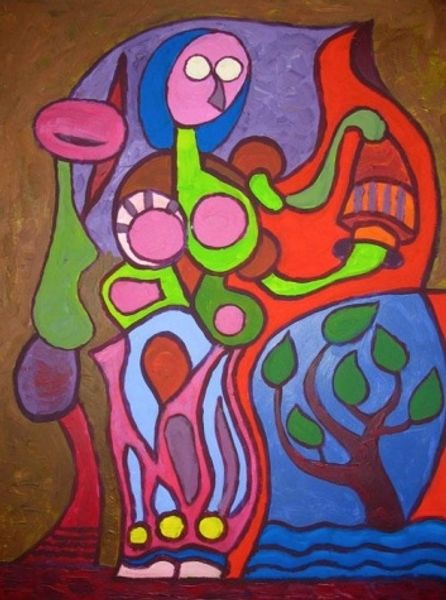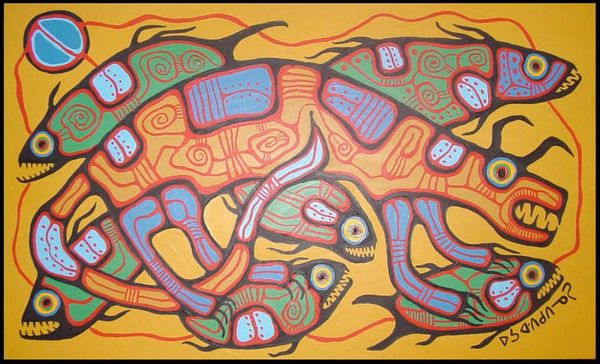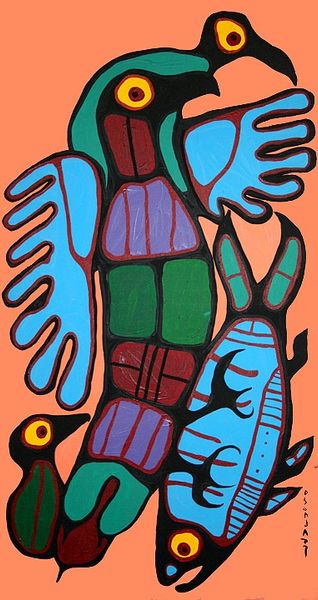
painting
#
organic
#
painting
#
figuration
#
indigenous-americas
Copyright: Estate of Norval Morrisseau
Curator: Standing before us is "Otters," a 1993 acrylic and mixed media work by Norval Morrisseau. Editor: The colour is immediately striking. That hazy green backdrop makes the otters and fish truly pop. It's like peering into a dream of water. Curator: Morrisseau, an Ojibwe artist, is known as the founder of the Woodland School of Art. His work blends traditional legends and imagery with a modernist style, creating pieces that are both personal and culturally significant. Editor: Definitely, I see a fascinating use of line and shape here, echoing a style related to that of decorative, organic Modernism. The thick, black outlines enclosing fields of vibrant colours creates a captivating rhythm and energy. It reminds me how semiotics are deeply embedded here through what seems like symbolic storytelling of some kind. Curator: Indeed, Morrisseau often employed x-ray style imagery, a technique drawn from traditional Ojibwe birchbark scrolls and pictographs. This revealed the inner spirit or essence of the animals he depicted, not just their outward form. The inclusion of such elements points to larger political context related to indigeneity. Editor: Look how the red lines connect all the figures— almost creating energy. The use of primary colours is quite interesting, how it gives such playful dimensions to what are, indeed, symbolically dense representations. There's this beautiful sense of dynamism. Curator: Morrisseau used his art as a form of cultural revitalization, reclaiming Indigenous identity in the face of colonialism. His paintings became powerful statements about the spiritual interconnectedness of all living things. Also, "Otters" underscores Indigenous art's pivotal public role by visualizing shared narratives from traditional Ojibwe teachings. Editor: I love how the artist captured a feeling of interconnectedness through the vibrant style and design—almost like a modern translation of an ancient creation myth, pulsing with life and colour. Curator: Considering this, it challenges me to reflect on my own historical and societal roles by reminding myself of art's political impact as a transformative representation. Editor: On the other hand, I appreciate art's intrinsic abilities and that art is a visual system as is stands, for its beauty. The structure of the design provides its own rewards.
Comments
No comments
Be the first to comment and join the conversation on the ultimate creative platform.
